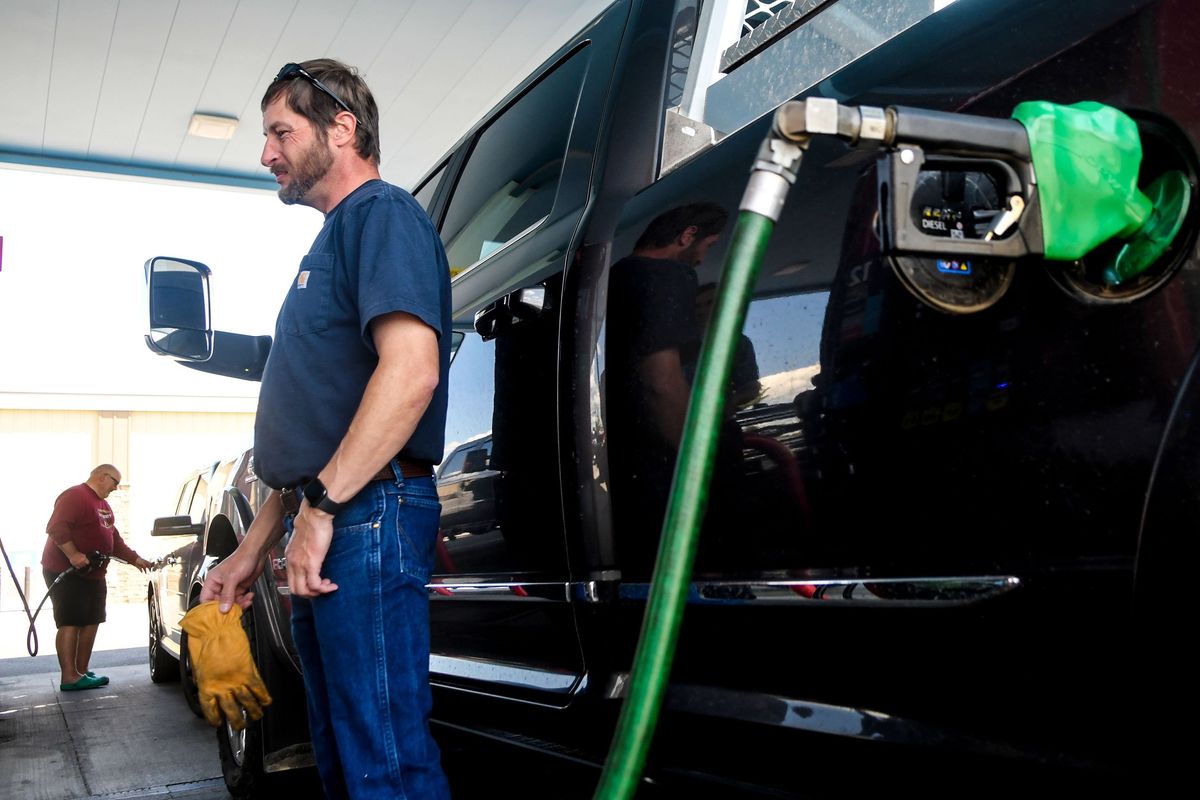Going to Idaho for gas? Washington’s may be the most expensive in the nation, but here’s why some Spokanites shouldn’t bother

The grass isn’t always greener on the other side of the border.
Washington this week usurped long-ruling California’s title of America’s costliest gas. Less than a mile across the border at a Maverick gas station in Idaho, lines of vehicles waited for their turn to fill up their tanks, overwhelmingly with Washington license plates. Many brought portable jerrycans. Nearly everyone was there for the price: almost a dollar cheaper at $4.09 for gas and $3.85 for diesel. Gasoline buyers aren’t even getting the best deal. The Walmart 6 miles away is only $3.93 a gallon.
“It’s about principle,” Debra Jones of Spokane Valley said about the cost of Washington gas while filling her tank. “Even if it’s expensive to drive out here, even if it’s 2 cents cheaper, I’ll do it.”
Brett Emmert of Davenport, Washington, was of a similar mind. His pickup has a 100-gallon auxiliary tank that he fills with diesel every three weeks for his vehicle and agricultural machines at home.
“Usually, I like to fuel up at the truck station. Their pumps work a lot faster and you don’t have to put in your card as often; most stop you at, like, $125,” he said.
He uses a number of apps to check his mileage and find cheaper fueling, and this station is the most effective, according to his calculations. Emmert said this much action was normal. “People come at 7 a.m., it’s just as busy.”
Spokane resident Nick Jagger said he comes to Idaho once a week. “Only reason I’m up here, that and groceries.”
Despite these reactions, Spokane County has one of the best gas rates in the state, behind only Yakima and Asotin counties at an average of $4.77 per gallon. Kootenai County is a respectable $4.07 – good by comparison, but somewhat expensive by Idaho standards.
Most citizens asked about the price indicated it was because of a gas tax. Is that true?
Yes and no.
In 2021, Washington state passed the Climate Commitment Act, implementing a Cap-and-Invest program designed to reduce greenhouse gas emissions. It took effect in February.
This legislation requires all companies producing 25,000 metric tons of carbon per year, primarily oil and energy companies, to either buy “emission allowances” equivalent to initially 30% of their output in one of the state’s quarterly auctions, or be fined up to $50,000 per ton per day.
Despite penalties not being applied until Nov. 1, 2024, fuel suppliers have increased their prices, possibly in order to cover the cost of purchasing allowances.
It isn’t a tax on private citizens, but it isn’t the only cause.
Mellani McAleenan, senior manager of public affairs at AAA Washington, explained some of the other pieces of the puzzle.
“The cost of crude oil is usually over 50% of gas costs, but its price has been falling and is currently below half of its price last year,” she said.
McAleenan acknowledged that legislation has had an impact on current price changes, but cited recent maintenance work on the BP Olympic pipeline as an additional burden that has also affected Oregon’s average, on top of a predictable summer price increase as more drivers take to the road. These prices are still down from last year’s astronomical $5.27 per gallon, but a far cry from pre-COVID prices that never soared above $3.50.
Origin aside, for the average Spokane driver, the numbers don’t exactly solve gas price woes.
A round trip from downtown to the Idaho border is 42 miles, $6.87 at the average mileage rate with Idaho prices. Filling up a 14-gallon tank is $57.26, for a grand total of $64.13. Meanwhile, going to the average Spokane gas station would be less than $2 more.